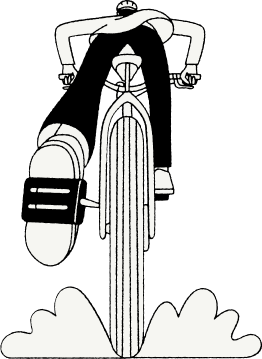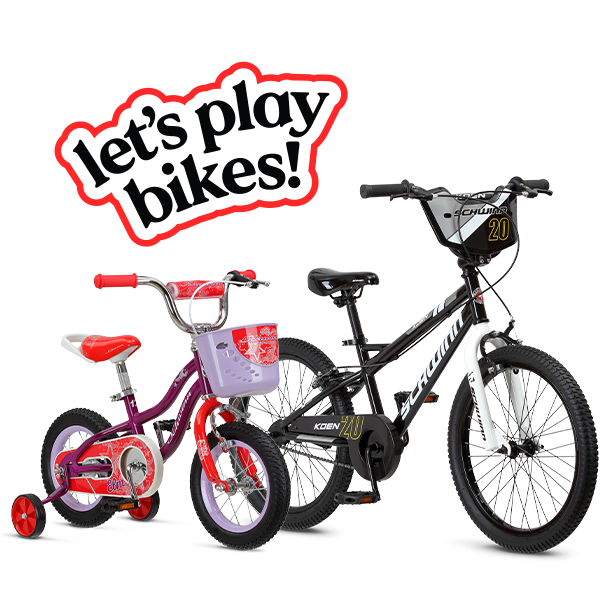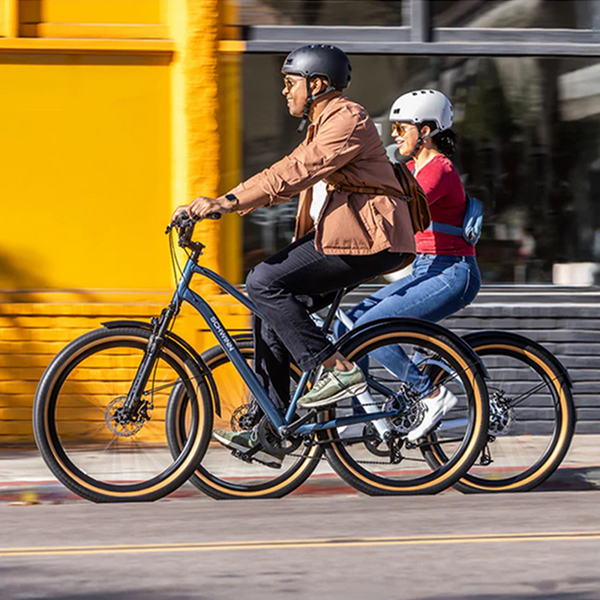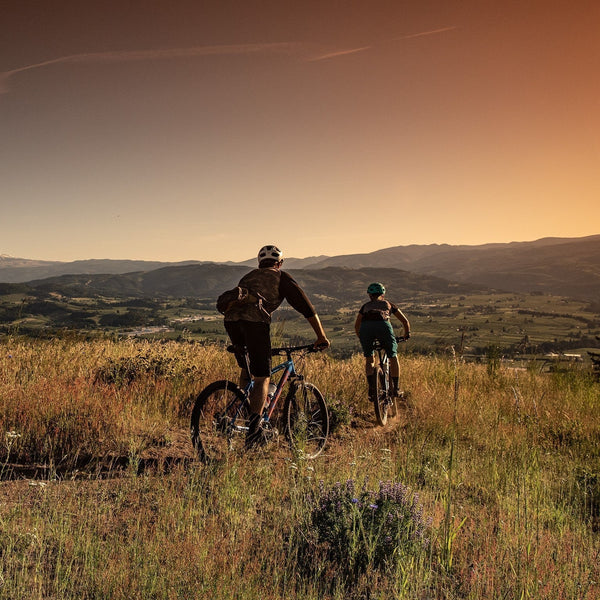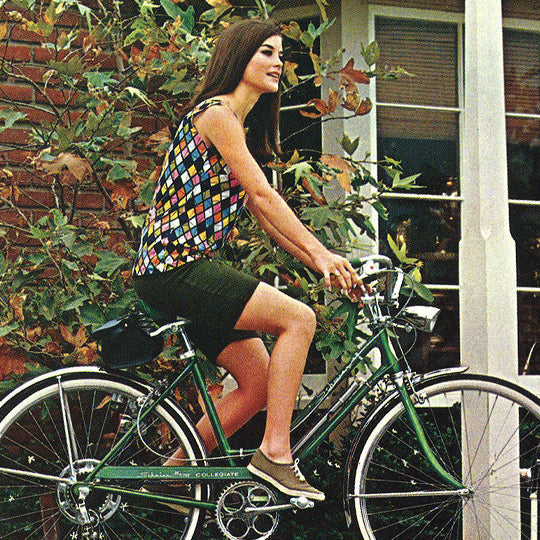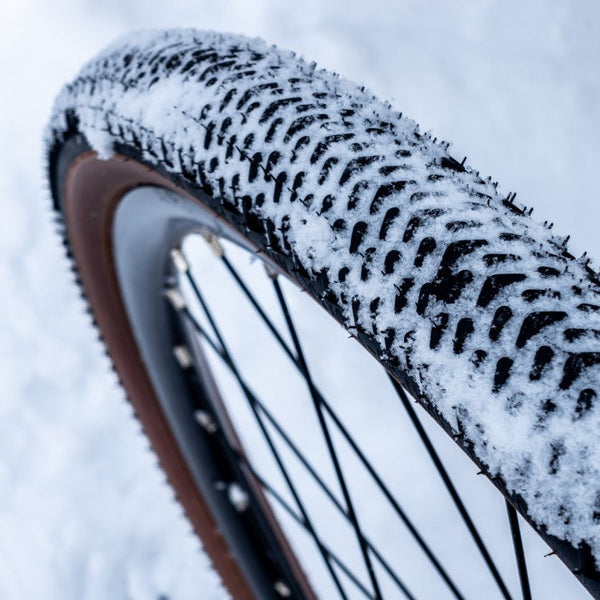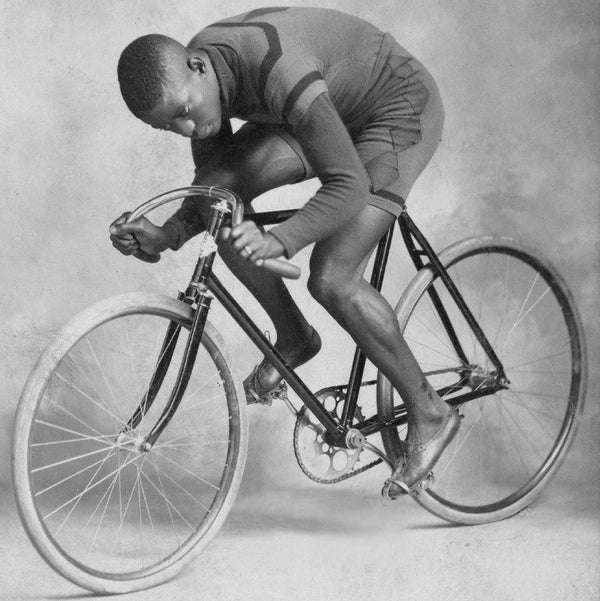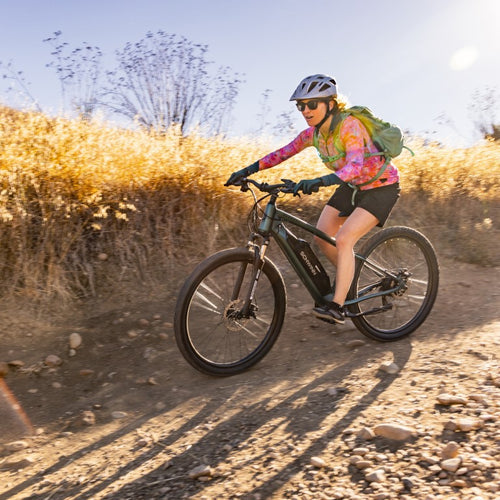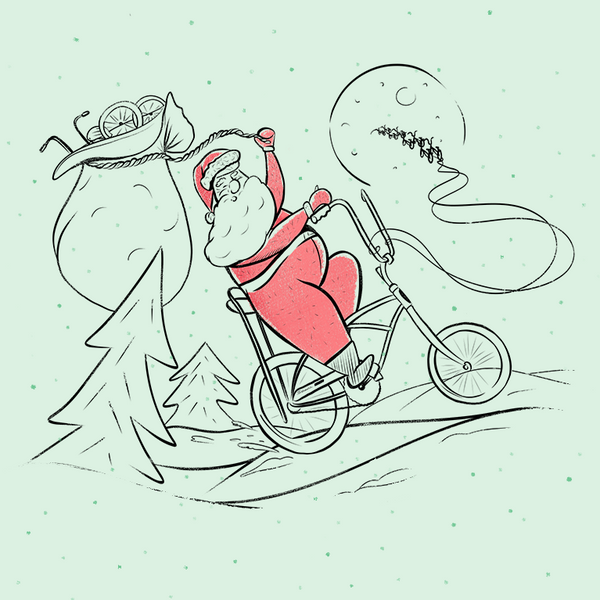National parks and outdoor recreation in general are major contributors to the physical, economic, and environmental well-being of our communities. Join us in learning about the history of our national parks and some of the fun facts that go with them. Plus, we sat down with our brand ambassador and national parks expert, Mikah Meyer to learn more about his journey to visit every national park in one trip (he’s the first person to do it) and how his Schwinn bike plays a part in his epic adventure.
About America’s National Parks
Yellowstone National Park was the nation's first national park and was established by an act signed by President Ulysses S. Grant on March 1, 1872.
44 years later, on August 25, 1916, the National Park Service was created by President Woodrow Wilson, when he signed an act that created this new federal bureau in the Department on the Interior which was responsible for protecting the 35 National Parks and Monuments, and those yet to be established.
Today, the National Park Service includes 423 areas covering more than 85 million acres in every state, the District of Columbia, American Samoa, Guam, Puerto Rico, and the Virgin Islands. These areas include national parks, monuments, battlefields, military parks, historical parks, historic sites, lakeshores, seashores, recreation areas, scenic rivers and trails, and the White House.
See the complete list of National Park Service Units!
Why Are National Parks Important?
National parks are not just great places to see stunning landscapes and have amazing outdoor adventures, they are also critical to environment and ecosystems, serving as anchors and pathways linking wildlife habitats and supporting broader conservation.
A national park may be set aside for purposes of public recreation and enjoyment or because of its historical or scientific interest. Most of the landscapes and their accompanying plants and animals in a national park are kept in their natural state.
Maintain Ecological Biodiversity & Wildlife Habitats
Biodiversity is the diversity of life across the ecosystem, species, and genetic levels. National parks manage habitat to protect species, especially endangered and threatened species, who use park lands and water to find food and raise their young. They also restore native species and ecosystems, including control of invasive species, integrated pest management, inventory and monitoring. This helps preserve large-scale marvels like migration and dispersal, as well as genetically diverse wildlife populations.
The national parks are home and habitat to more than 400 endangered or threatened plant and animal species.
From prairies blooming with wildflowers, stream teeming with fish to majestic trees and marine mammals, and migratory birds… you experience a park’s biodiversity by simply visiting and enjoying the sites.
Catalyst for Resource Protection
While national parks account for a little over 3% of protected lands, they serve as hubs for much larger landscapes and ecosystems. Experts agree that we must fully protect 30% of our lands and water to guard against the worse impacts of climate change. National parks are a natural anchor for this plan.
Through the love and value of National Parks, we can help protect every place on Earth.
Support Economy
National parks help drive a vibrant tourism and outdoor recreation industry! They serve as a vital part of our nation’s economy, with visitor’s spending 28.6 BILLION dollars (2020) in communities within 60 miles of a park. That means every dollar invested by American taxpayers on National Park Service returns approximately a $10 return to the economy.
Cultural Preservation
Two thirds of US national parks are historic and cultural sites, yet the role the National Park Service plays in protecting and interpreting our history is largely overlooked (and underfunded). Cultural preservation includes working with American Indian tribes, state and local governments, nonprofit organization, historic property owners to not only preserve sites but to also document and educate the public on the stories and history with them.
Health / Wellbeing
No surprise here, but nature has a positive effect on our health! Studies have shown on a personal and societal level, that we tend to be happier, healthier, and more productive, creative, active and engaged in our communities when nature is a meaningful part of our lives.
National parks not only increase your physical activity, but also increase your exposure to nature, promotes mindfulness, provides opportunities to socialize, and inspires curiosity and life-long learning.
Fun Facts About US National Parks
- The National Park Service’s birthday is on August 25th! In 2022, it will be 106 years-old!
- The National Park Service employees about 20,000 permanent, temporary, and seasonal employees and utilizes 279,000+ volunteers!
- The largest national park is Wrangell – St. Elisa National Park & Preserve in Alaska with 13.2 million acres.
- The smallest national park is Thaddeus Kosciuszko National Memorial in Pennsylvania with .02 acres.
- The most visited national park is Blue Ridge Parkway (North Carolina & Virginia) with 15.9 million visits, with the Great Smoky Mountain National Park (Tennessee & North Carolina) coming in #2, with 14.1 million visits each year.
- There are 16 endangered species of turtle or tortoise found at national park sites.
- Three of the 10 highest waterfalls in the world are located in Yosemite National Park in California.
- The Grand Canyon (Grand Canyon National Park in Arizona) is known as one of the Seven natural Wonders of the World.
- Yellowstone National Park is the oldest U.S. national park, founded in 1872.
- There are over 18,000 miles of trails in national parks, just waiting for you to explore them!
We encourage people to get outside, explore and enjoy outdoor activities in national parks… and there’s no better way to explore than on a bike! National parks promote access, equity, education and inspiration to millions of people and endless opportunities for healthy recreation.

What inspired you to start your National Parks Journey?
My dad was a big fan of road trips, but he passed away at 58 and never got to take any retirement road trips or drive me to/from college like he had my three older sisters. I was 19 at the time, so I did a road trip a few days after his funeral to process the loss. Along the way I vowed to do a road trip every year around the anniversary of his passing, and at age 28 decided that when I turned 30, it’d become a three-year road trip to every National Park Service site. So, I could fulfill one of my retirement goals in case I pass away at age 58 too.

How did you plan your trip?
I spent two years looking at others’ journeys, studying weather patterns, peak park visitation times, and asking for tips from the two-dozen people who’d been to every Park Service site during their lifetimes.
How did you get to all the parks?
I lived in a van down by the river :) …and lakes, mountains, prairies, and so on. In a self-converted, white, windowless cargo van.
It wasn’t fancy, but it was functional. With 500 watts of solar panels that fueled a high efficiency fridge and a power strip to use a fan on hot nights. And I just needed functional.
How did you afford to travel for 3 years?
I worked multiple jobs and saved throughout my 20’s, knowing doing something big at age 30 was a goal for my life. When that money ran out a year into the project, I performed concerts around the country for donations (my degrees are in classical singing), guest preached sermons at churches nearly every Sunday, and gave speeches that collected support from each crowd.
Did you travel alone?
For the first year I was traveling with my significant other. But even as couples married for decades would tell us, “I wouldn’t have lasted a month in 70 sq. ft. with my spouse!”
So… after a year, we honored each other’s life goals and they moved back into an apartment and I stayed in the van and kept traveling to the parks.
What was your biggest challenge?
Loneliness and logistics. Even when I tried to meet up with friends along the way, it was hard to coordinate schedules. And many of our parks are in such remote places that nobody was nearby.
That, and traveling nonstop. Most times we take weeks or months to plan a trip, so we can enjoy it. But I was constantly at any one of the 400+ parks and sharing about the previous park on social media/blogs, capturing photos/videos of the current park, and sending emails planning for the next park.
Times 400, nonstop.

Why do you love National Parks?
Our National Park Service protects the places that tell the American Story. Some of those are natural wonders that are delights for the eyes, others are historical points that teach about how we’ve come to current day, and many are places where important cultural moments in American history happened.
No matter how far technology advances, nothing can capture the feeling of sitting at Inspiration Point in Yosemite at sunset. And our national parks provide that opportunity in all 56 of the U.S. states/territories and district.
What’s your favorite National Park (and why)?
Dinosaur National Monument. This video shows why!
In your opinion which National Park sites are hidden gems and why?
Of the 423 NPS sites, I’ve made a list of my 63 favorites from my journey. These aren’t the same as the 63 sites that Congress designated as “National Parks,” but run the gamut from National Monuments to National Lakeshores.
I’ve been sharing these sites in various ways since finishing my three-year parks road trip in 2019, including this past month when I went back to Theodore Roosevelt National Park to e-bike their scenic roads for a 360-degree view experience unblocked by any vehicle.
This year, you’ve been re-visiting National Parks with your Schwinn e-bike. What is it like to experience a National Park from behind the handlebars?
So much flexibility! Our national parks are crowded. And parking, traffic, and lines can often be issues. But with my Schwinn e-bike, I can pull-over wherever I want without worrying about parking. I can weave through traffic that’s stuck in once place. And I can avoid lines of people waiting for a glimpse at a view from their vehicle. And those views are unencumbered by any metal. Meaning full immersion in our natural splendors.
What is your favorite part of biking in a National Park?
The multi-sensory experience! Even with the windows down, a vehicle guards you from feeling, smelling, or touching many parts of the park.
Being on a bike gives whole new meaning to feeling the wind in one’s hair. And the scents and fresh air of our parks are some of the best parts!
How do you plan your National Park Bike Trips?
A lot of it is based on places I went during my three-year journey that I’d like to go back to. I didn’t have a bike with me on that project, so I didn’t get a lot of biking experiences that I wish I could’ve. So now I’m going back with a bike to do l the rides I wish I could’ve.
Aside from biking, I often look for a special event or ideal weather time to visit. Certain holidays, anniversaries, or festivals in/near parks can really enhance the experience. So now that I’m not traveling nonstop, I try to time my parks visits with something special.
How is e-biking in a National Park different than visiting by car or on foot? How far can you go?
It depends what type of bike you have. For my most recent Theodore Roosevelt visit, I had an extended battery Coston DX, which meant I could go 80 miles on a single charge.
That allowed me to bike all the way from Medora, the park’s anchor town, through the main entrance and all the way around the 48-mile South Unit Scenic Loop, and ride back to the hotel to charge for my ride over lunch so I could go to the North Unit and their 14 mile Scenic Drive later that day.
E-biking is great because even after all those miles, my legs weren’t tired, thanks to the electric support. Meaning I could go for a hike, ride a horse, or walk around town without having to take any rest time to sit in the hotel and recover. Maximizing my time in/around the park!

Biking through national parks is a great way to see beautiful scenery and discover new places! In many parks you can travel by roads (which are sometimes car-free), in some parks, and on select trails. There are many places in parks that cars cannot go, but you can visit by bike! Some parks even over bike rentals or provide guided bike activities.
Get behind the handlebars and explore our national parks by bike! To get started, check out which national parks offer biking. Whether you’re looking for amazing e-bike rides to mountain and road biking, there’s so many options!

E-Biking In National Parks
There’s nothing better for an e-bike lover than being able to explore and experience the beauty of nature in our national parks. Electric bikes are a great way to get fresh air, exercise, and explore, but you need to check out rules and regulations before hitting the pavement or trail.
Rules for Electric Bikes (e-bikes) vary by each park and by roads. Before you roll into the park, check the rules, to make sure your class of e-bike is allowed.
- Class 1 E-Bikes – have a motor that only provides pedal assist and only goes to up 20 MPH
- Class 2 E-Bikes – have a motor that provides pedal assist and throttle, and only goes to up 20 MPH. All Schwinn Electric Bikes are Class 2 (which are allowed in most areas)
- Class 3 E-Bikes – have a motor that provides pedal assist and throttle, and goes up to 28 MPH
Helpful Resources To Plan Your National Park Biking Trip
Website: www.nps.gov
Instagram: @nationalparkservice
Twitter: @NatlParkService
Facebook: @nationalparkservice
National Park Service Trip Planning Guide
National Park Service Mobile App (for both apple + android)
Bicycling.com – ‘The 30 Most Epic National Parks with Bike Trails’
Electric Bikes in National Parks
National Park Insider Tips from Rangers
Find a National Park
Earthtrekkers.com – Best National Parks by Season
